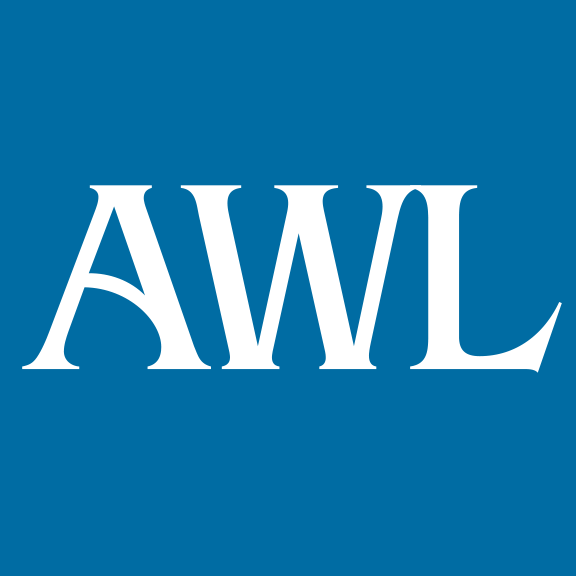The road to retirement is a long one. There may be curves and bumps (ups and downs) along the way. However, as with any journey, it helps to have a few key milestones to help gauge your progress and ensure you are headed in the right direction. While your individual retirement plan and goals will be unique to your income, family situation, and desired lifestyle, most Americans share a number of common retirement milestones.
These milestones are based on your age, along with important dates and deadlines related to Social Security benefits, Medicare, and tax-advantaged retirement plans. Although you should work with and attorney and financial advisor to develop a comprehensive retirement strategy as part of your overall Life & Legacy Plan, we include several of the key milestones here.
Age 21 to 49: Make savings a habit
The key to having a comfortable retirement is by saving as much as possible as early in your career as possible. Time, tax breaks, and compounding interest all add up, and by getting into the habit of saving when you are young, it will be exponentially easier to reach vital retirement goals as you get older.
With this in mind, one of the most important things you can do at this age is to take full advantage of employer-sponsored retirement accounts, such as 401(k)s, 403(b)s, IRAs and other tax-advantaged plans, especially if your employer offers a match. A common rule of thumb is that you should save at least 15% of your pre-tax income each year. If that’s not possible, then save as much as you can—and at least enough to get the full benefit of your employer’s matching contribution if one is offered.
For 2022, you can contribute up to $20,500 to your 401(k) or 403(b) plan, while the contribution limit for both traditional IRA and Roth IRAs is $6,000. Since you are likely to be in the workforce for several decades, you’ll have a higher tolerance for market volatility and risk, so you will likely want to consider investing with a focus on maximizing growth, rather than taking a more conservative approach.
Age 50: Catch-up contributions begin
Once you reach 50, you are likely in your peak earning years, so you should be maxing out your contributions to tax-advantaged retirement accounts. To help you achieve this, the IRS allows those age 50 and older to make an extra annual “catch-up” contribution.
In 2022, the catch-up contribution limit for a 401(k) or 403(b) is $6,500, which gives you a total contribution limit of $27,000 annually. For traditional IRAs and Roth IRAs, the catch-up contribution is capped at $1,000, which equates to a total limit of $7,000 annually.
Since you are likely nearing retirement age, you will have less tolerance for risk, so you may want to consider revisiting your retirement portfolio to determine if it’s the right time to start making a gradual shift from investing primarily for growth to a more conservative strategy that’s focused primarily on generating income. And if you haven’t already, now is the time to find a financial advisor, who in conjunction with us, can support you in planning for and reaching your retirement savings goals.
Age 55: 401(k) withdrawals possible under the Rule of 55
Although you generally must wait until age 59½ to make withdrawals from your 401(k) without incurring a 10% penalty, the IRS allows for a “separation of service” exception for certain workers. Also known as the Rule of 55, if you quit, were laid off, or otherwise terminated from your job during or after the year you turn 55, you can take withdrawals from your 401(k) or 403(b) penalty-free from the account associated with that job.
That said, you are still required to pay income taxes on any withdrawals from your 401(k) or 403(b) in the year they were taken. Moreover, IRAs are not eligible for this exception, and for those accounts, you must wait until age 59½ to take withdrawals without any penalty.
Age 59 1/2: Penalty-free retirement account withdrawals begin
Outside of the “separation of service” exception, this is the age when you can begin taking withdrawals from your retirement account, such as a 401(k), 403(b), and IRAs, without the 10% early withdrawal penalty. While you are free to make penalty-free withdrawals from your retirement account starting at this age, you are not required to make any withdrawals until age 72.
Though not subject to a 10% penalty, all withdrawals from your retirement accounts are subject to federal income taxes in the year you make them. Given this, you may want to consider setting aside some of the withdrawal to pay taxes.
Age 62: Social Security eligibility begins
This is the earliest age you can begin claiming Social Security retirement benefits. However, if you take Social Security early, your monthly benefit will be reduced by as much as 30%, depending on your date of birth. Conversely, your benefit amount increases each year until you start claiming benefits, or when you reach age 70, whichever comes first.
The age at which you are eligible for 100% of your Social Security benefit is known as your full retirement age. The full retirement age used to be 65, but in 1983, the law changed and gradually pushed the full retirement age up to 67, depending on the year you were born. As such, the dates below show your full retirement based on your birth date.
Year of birth: Age to receive full Social Security benefits
1943-1954: 66
1955: 66 and 2 months
1956: 66 and 4 months
1957: 66 and 6 months
1958: 66 and 8 months
1959: 66 and 10 months
1960 or later: 67
Age 64 3/4: You can enroll in Medicare
You can enroll in Medicare at any point during the seven-month period that begins three months before the month you turn 65. Medicare is our government’s basic health insurance program for those age 65 or older.
Unless you are still covered by the health insurance of your employer or your spouse’s employer, you should consider enrolling in Medicare during this seven-month window to cover expenses related to inpatient hospital care, doctor visits, outpatient care, and prescription drugs. If you do not enroll during this initial window, you may have to pay higher premiums for life should you choose to enroll later on.
That said, if you still have health insurance from your employer or your spouse’s employer, you can postpone enrolling in Medicare until that coverage ends, without having to pay higher premiums.
Age 65: Medicare begins and you can enroll in Medigap
If you enrolled in or are receiving Social Security, you qualify for Medicare coverage on the first day of the month in which you turn 65, regardless of whether or not you are retired. On that same day, the six-month enrollment window for the Medicare supplemental insurance known as Medigap also begins. Medigap is private insurance that helps you cover a portion of the out-of-pocket copays and deductibles of traditional Medicare.
If you plan to continue working after age 65 and are covered by your employer’s health insurance plan (or your spouse’s), speak with the employer and your benefits coordinator to see how signing up for Medicare would affect that coverage. Depending on the size of the employer, you may be entitled to a special enrollment period of up to eight months after the employer-tied coverage ends to sign up for Medicare with incurring a penalty.
Age 70: File for Social Security, if you haven’t already
As mentioned earlier, the longer you wait to claim Social Security between your full retirement age and age 70, the higher your benefits will be. In fact, your benefits increase by 8% for each year you wait between your full retirement age and 70. But once you reach 70, your benefits no longer increase, so don’t put off filing for Social Security past this age.
Age 72: Required minimum distributions (RMDs) begin
Once you reach 72, you are required by law to begin taking distributions from tax-deferred retirement accounts, such as a 401(k), 403(b), and traditional IRA. These are known as required minimum distributions (RMDs), and your first distribution must be taken by April 1 of the year you turn 72. Thereafter, annual withdrawals must be taken by December 31 of each year.
Note: RMDs don’t apply to Roth IRAs, because contributions to these accounts are made with after-tax dollars.
It’s extremely important to stay on top of your RMDs, because if you miss one, you could owe a penalty of up to 50% of the amount you should have withdrawn. The amount you must withdraw for your RMD depends on the balance in your account and your life expectancy as defined by the IRS.
To calculate your RMD, visit the IRS website, and refer to the table in IRS Publication 590-B. From there, locate your age in the table, and find the “life expectancy factor” that corresponds to your age. Then, divide your retirement account balance as of December 31st of the previous year by your current life expectancy factor. This should give you the amount of your RMD.
Consider What’s At Stake
When preparing for your senior years, it’s not enough to simply hope for the best. You should treat retirement planning as if your life depended on it—because it does. Without an effective plan, you risk a future of poverty, penny pinching, and dependence. The stakes could hardly be higher.
While the best way to ensure a comfortable retirement is to start planning (and saving or building a work-until-you-die-happy plan) as soon as possible, it’s also critical to seek the guidance and support of professionals, who can help you develop strategies to maximize your investments and savings, while minimizing taxes and avoiding common pitfalls. We will work with you and your financial advisor to educate and empower you to choose the most effective planning strategies to ensure your journey to retirement is as smooth as possible.
And if you need help finding a financial advisor, we will introduce you to the experienced professionals we trust most. With their support and ours, you will have peace of mind that you and your family will be well-protected and well-planned for no matter what the economy and stock market may be doing at any given time.










